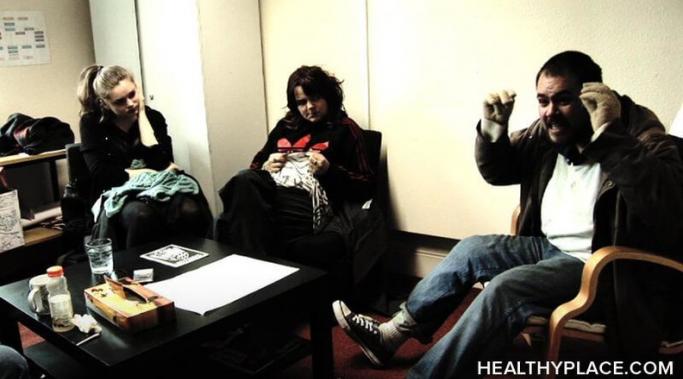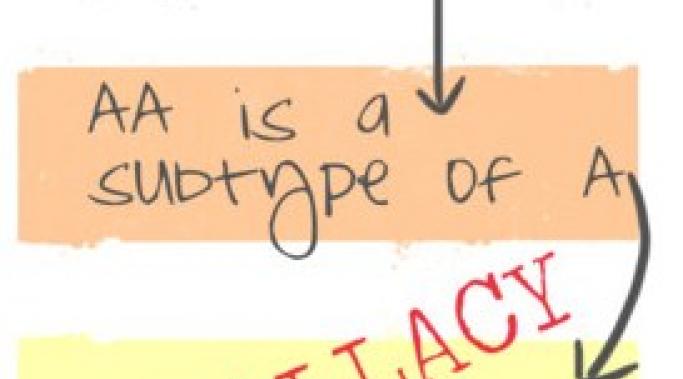Dissociative identity disorder (DID) and other dissociative disorders go hand-in-hand with signs and symptoms of dissociation. You can find these signs of dissociation included in many lists, and in books like the Diagnostic and Statistical Manual for Mental Disorders, Fifth Edition (DSM-5). But symptoms of dissociation aren't always so black and white. The reality of dissociation goes beyond the obvious signs and symptoms of dissociation that you read about. So what is dissociation really like?
Stigma and Misconceptions
Dissociative identity disorder (DID) remains a largely misunderstood diagnosis, and one of the things people need to understand is that dissociative identity disorder doesn't make you violent. Previously known as multiple personality disorder, or MPD, DID has been the topic of several television shows, books, and Hollywood films -- including the new movie Split, set to be released later this month. These portrayals, however, are not always accurate. Characters with DID are often portrayed as violent and dangerous, but that is not the reality. Dissociative identity disorder doesn't make you violent.
I am living with dissociative identity disorder and I can't just "get over it." Would you tell someone with diabetes to "just get over it?" Dissociative identity disorder (DID) and other mental illnesses are illnesses. They all have causes, treatments, and greatly affect the individuals that have them. Mental illness is not a choice. It cannot be switched off and on at will. No one can wake up and decide they aren't going to be mentally ill that day. So why do some people expect those with mental illnesses like DID to just get over it?
Embracing the individuality of alters in dissociative identity disorder (DID) is often misunderstood by people without DID. One assumption is that alters are voices a person with DID hears in his or her head; this leads people to confuse DID with schizophrenia. Another assumption is that alters are imaginary friends made up in one's mind, yet unlike imaginary friends, alters are not consciously created. Lastly, many people believe that alters are different mood states or aspects of a person's personality. This isn't accurate, either (Mental Illness Myths And The Damage They Cause). The reality is that alters are individual persons existing within and sharing one body. Embracing the individuality of alters is key to DID treatment and recovery.
Over the years I've heard many people advise dropping the word 'disorder' from dissociative identity disorder, citing
A) dissociation as a normal response to trauma, and
B) honoring subjective experiences as the primary reasons that it’s not helpful.
But the degree to which something is normal really has nothing to do with whether or not it’s a disorder. Disorders are referred to as disorders not because they're abnormal, but because they actively, regularly, and severely disrupt people's lives to such an extent that their ability to function is notably, even dangerously, compromised. And labeling a particular set of psychiatric symptoms with a particular psychiatric diagnosis is no more a call to ignore individual experience than it is to use labels like diabetes, hyperthyroidism, or influenza.
All of the misconceptions about Dissociative Identity Disorder bother me because they create barriers to diagnosis, treatment, and support. But there’s one myth that bothers me for more personal and, up until today, private reasons. And that’s the assumption that child abuse causes Dissociative Identity Disorder.
Reader Deanna asked if anyone has ever experienced remission from Dissociative Identity Disorder. If we’re defining remission as a period of diminished, unobtrusive dissociative symptoms – “normal” dissociation, in other words – then I’d wager there are people who have experienced exactly that. But they have worked hard to achieve that degree of integration and awareness. It didn’t happen spontaneously, which is what I suspect most of us with Dissociative Identity Disorder mean when we bring up this idea of remission. And I also suspect it isn’t really integration we’re talking about, but the apparent disappearance of other personality states. I’m guessing plenty of people experience this latter scenario too; but remission it is not.
The terms repressed memory and recovered memory gained popularity in the mid-1980's along with the multiple personality disorder diagnosis. As a result, these terms are still strongly associated with dissociative identity disorder (DID) (the replacement label for MPD in the United States since 1994). They're also strongly associated with unethical therapeutic practices, false memories of abuse, and lives destroyed by both. And while those associations have merit, repressed and recovered memories aren’t generally as dramatic and rare as their inflammatory connotations suggest.
Nothing about dissociative identity disorder is quite what the most popular phrases used to describe it imply. “Losing time” is no exception. When we talk about losing time we’re talking about severe dissociative amnesia which, in a milder form, is something I believe everyone experiences. But the phrase “losing time” suggests a highly dramatic, easily recognizable aberration. In my experience, however, dissociative amnesia is startlingly surreptitious. It’s easy to be unaware that you’re losing time at all.
Yesterday, I came across a picture of a sign I’d taken several months ago while out shopping. The sign was under a display of eye shadow applicators that each contained two different colors and it read, “Split Personality – brings out the best in both of you.” Two shades of make-up, one for each personality. I’m sure someone fancied themselves terribly clever when they came up with that. But as much as I loathe the idea of suiting up with the PC police, I have to say that glamorizing Dissociative Identity Disorder to sell beauty products isn’t at all clever. In fact, I think that the pervasive use of mental illnesses as punch lines undermines efforts to promote understanding and support for people living with them.







